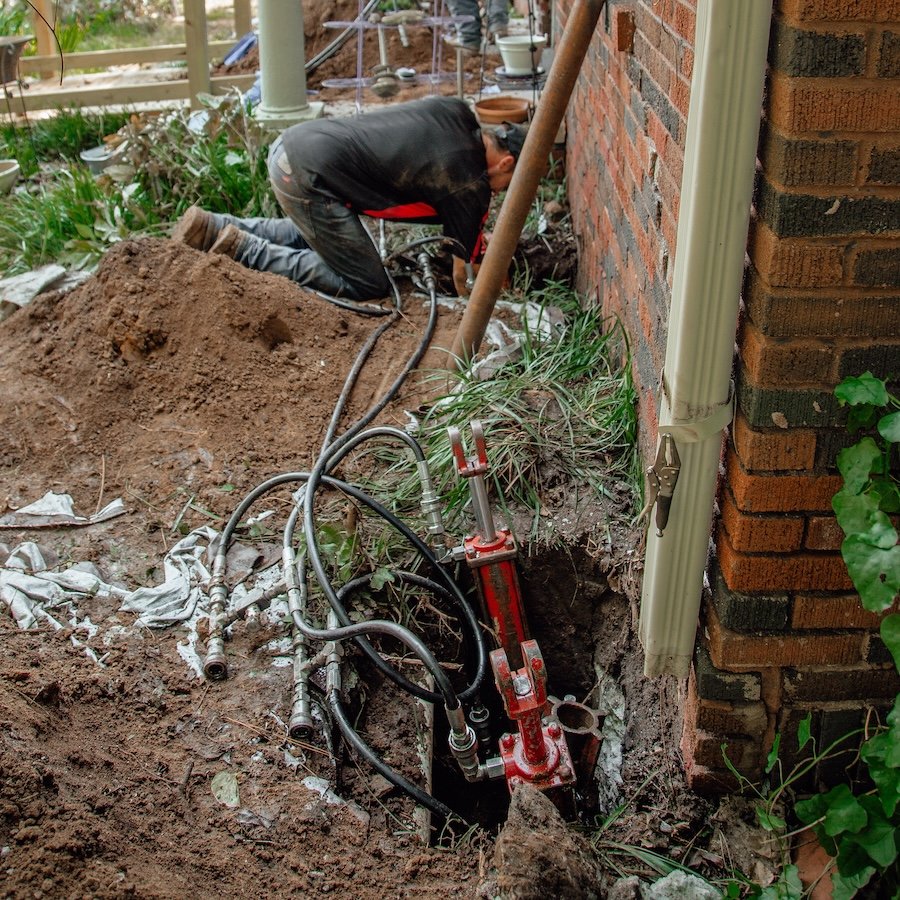
Signs & Causes of Foundation Problems
How To Identify and Understand the Next Steps
It’s important to know the signs and causes of foundation problems to keep your home safe. This guide will help you spot issues early so you can fix them before they get worse. Recognizing these signs can save you time and money while keeping your home stable and secure.
Signs of Foundation Problems
Inside Your Home
-
Check for cracks in walls, floors, and tiles. Small cracks can be normal, but larger cracks or those that keep growing may indicate a shifting foundation. Pay close attention to areas where walls meet floors or ceilings, as these are often the first places to show signs of stress.
-
If doors or windows are hard to open or close, it might be a sign of a foundation issue. This happens when the foundation shifts, causing the frames to become misaligned. If this issue persists with other foundation issue signs, it’s best to consult a professional.
In Your Garage
-
Look for cracks in the garage walls. These can signal that the foundation is experiencing pressure or movement, which can worsen if not fixed. Watch and monitor the cracks over time and contact a professional if they become severe.
-
Check if the walls are bending or twisting. Warping can lead to structural problems and may require immediate attention. It’s essential to address this to prevent further damage.
-
If there’s a gap between the garage door and the ground, that could be a warning sign. This may indicate that the foundation has settled or shifted, affecting the alignment of the garage door.
Outside Your Home
-
Look at your foundation, bricks, and siding for any cracks. Horizontal cracks can be particularly concerning, as they may indicate more serious issues with stability. Even small cracks should be monitored, as they can grow over time.
-
Noticeable gaps around doors and windows may mean the foundation is settling unevenly. This can lead to drafts, water leaks, and more extensive damage if not addressed. Keep an eye on any changes in how doors and windows operate.
IN your Basement
-
Look for cracks or walls that are tilting. These are strong indicators of potential foundation failure. Ignoring these signs can lead to more significant issues down the line.
-
Be on the lookout for water pooling in your basement. This can result from drainage issues or cracks in the foundation, and it’s crucial to address any water problems quickly to prevent mold and structural damage.

Causes of Foundation Problems
Foundation issues can arise from several factors. Understanding these causes can help you take preventative measures and address issues before they escalate. Here are some common causes:
Soil Movement
Changes in soil, like drying out or getting wet, can affect the foundation. Expansive clay soils, for example, can swell when wet and shrink when dry, putting stress on your foundation.
Poor Drainage
If water isn’t draining away from your foundation, it can weaken it over time. Ensure gutters and downspouts direct water away from your home, and consider landscaping that promotes good drainage.
Tree Roots
Roots from big trees can push against the foundation and cause cracks. If you have large trees near your home, consider monitoring their impact on your foundation and, if necessary, consult an arborist.
Temperature Changes
Hot and cold weather can make the ground expand and contract, affecting the foundation. This movement can lead to cracks and other structural issues over time.

